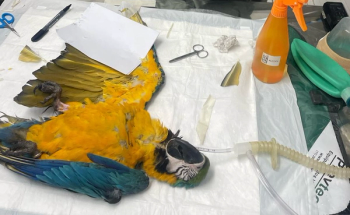
CDC launches program to raise awareness, help curb rabies
Atlanta, Ga. - World Rabies Day, originally designated for Sept. 8 by the Centers for Disease Control and Prevention (CDC), will be extended through several weeks to include global events with the shared goal of raising international awareness, education and disease prevention.
ATLANTA, GA. — World Rabies Day, originally designated for Sept. 8 by the Centers for Disease Control and Prevention (CDC), will be extended through several weeks to include global events with the shared goal of raising international awareness, education and disease prevention.
Almost 50 countries will participate, from the end of August through the beginning of October, with rock concerts, races, swimming events, dog-vaccination drives and educational symposiums.
The CDC-hosted World Rabies Day Symposium and Expo will review historical progress, current status and future needs of rabies prevention and control, featuring international experts.
The main symposium on Sept. 7 will focus on controlling canine rabies in the United States, one of the main public-health success stories of the last century, says Abbigail Tumpy, CDC spokesperson and World Rabies Day global communications coordinator.
The program originated in January as a joint effort of the CDC and UK-based Alliance for Rabies Control. They were joined by the American Veterinary Medical Association, World Organization for Animal Health (OIE), World Health Organization (WHO) and the American Animal Hospital Association (AAHA), among others.
"Rabies is one of those diseases that takes so many diverse roles to address. It takes animal control officers, veterinarians, medical doctors, quarantine stations domestically and the public-health infrastructure from the federal government down to the local level," Tumpy says.
"This effort is aimed, not only at the success stories in the United States, but also to come up with the willpower and ability to focus on this issue globally."
Former CDC Veterinary Medical Officer Cathleen Hanlon, VMD, PhD; and Deborah Briggs, PhD, former director of the Kansas State University College of Veterinary Medicine Rabies Lab and adjunct professor, came up with the World Rabies Day concept.
"It is not the most important disease in the world. Rabies has been ignored and neglected because it seems like a minor component of the health infrastructure of a community," Hanlon says.
"But our expectation is simple: We are trying to increase dialog between public and veterinary health for disease prevention."
A key focus of the main symposium is the U.S. success story with rabies.
"We accomplished a lot with dog vaccinations and stray dogs 50 years ago. It basically eliminated dog-to-dog transmission of rabies. When you eliminate the K-9 strain of the virus, you eliminate the most dangerous and frequent source to humans," Hanlon says.
A veterinarian tool kit, created by AVMA, AAHA, Merial, CDC and the National Association of State Public Health Veterinarians, is being provided to help DVMs better understand how to stay involved in rabies control and keep clients educated.
The kits include talking points for veterinarians to follow when discussing the disease, client materials on rabies prevention and a checklist detailing ways for DVMs to stay involved in prevention.
Event organizers also are developing a press-release template for local media outlets for use during a rabies-case discovery or outbreak.
Responsible for 55,000 human deaths annually worldwide, rabies is most often found in wild animals — mainly raccoons, skunks, bats and foxes.
Of 6,400 animal cases reported yearly in the United States, fewer than 500 involve dogs and cats.
Human cases occur mostly in India and Africa. The United States averages fewer than three cases a year, says Jesse Blanton, CDC rabies-surveillance coordinator.
Newsletter
From exam room tips to practice management insights, get trusted veterinary news delivered straight to your inbox—subscribe to dvm360.






